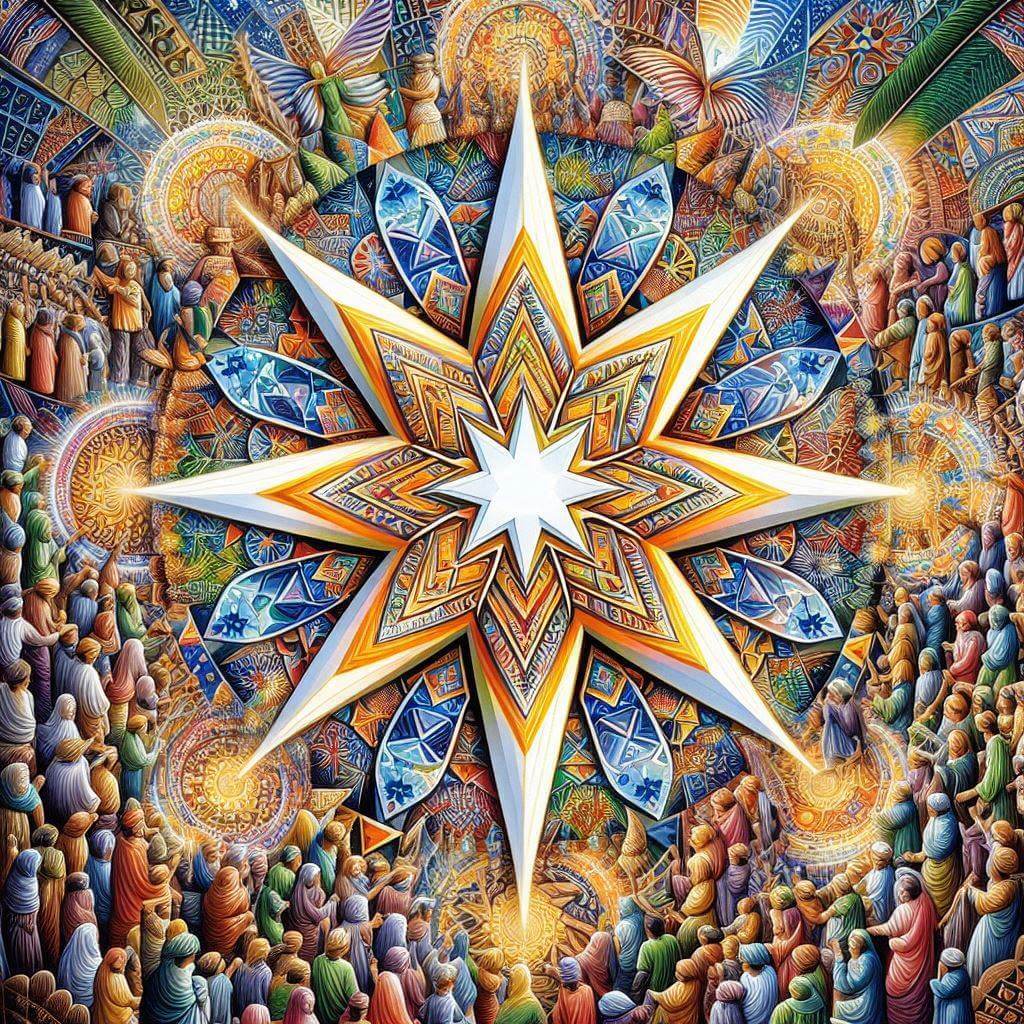La bandera de las Islas Marshall presenta un diseño llamativo con un campo azul profundo, dos franjas diagonales de color naranja y blanco, y una gran estrella blanca con veinticuatro rayos en la esquina superior del lado de izqueirda. Esta combinación única de elementos captura de manera hermosa la esencia de esta nación insular del Pacífico.
Información sobre las Islas Marshall
| Día de la Bandera Nacional | 1 de mayo |
| Estado soberano | Sí |
| Nombre oficial | República de las Islas Marshall |
| Capital | Majuro |
| Población | 59,190 |
| Área | 181 km² |
| Moneda | Dólar estadounidense (USD) |
| Idioma | Marshallés, Inglés |
| Continente | Oceanía |
| Región | Micronesia |
| Subregión | — |
| Fronteras | — |
| Zona horaria | Hora de las Islas Marshall (MHT) UTC+12 |
| Código de marcado | +692 |
| Dominio de nivel superior | .mh |
Historia de la bandera de las Islas Marshall
 Adoptada el 1 de mayo de 1979, la bandera de las Islas Marshall simboliza el camino del país hacia la autogobernanza y su independencia definitiva en 1986. El diseño de la bandera fue elegido a través de un concurso nacional, reflejando la visión colectiva y las aspiraciones del pueblo Marshallese. Su creación coincidió con la formación de las Islas Marshall como una entidad autogobernada en libre asociación con los Estados Unidos, marcando un hito importante en la evolución política del país.
Adoptada el 1 de mayo de 1979, la bandera de las Islas Marshall simboliza el camino del país hacia la autogobernanza y su independencia definitiva en 1986. El diseño de la bandera fue elegido a través de un concurso nacional, reflejando la visión colectiva y las aspiraciones del pueblo Marshallese. Su creación coincidió con la formación de las Islas Marshall como una entidad autogobernada en libre asociación con los Estados Unidos, marcando un hito importante en la evolución política del país.
Simbolismo y diseño de la bandera de las Islas Marshall
Cada elemento de la bandera de las Islas Marshall tiene un profundo significado simbólico. El campo azul representa el vasto Océano Pacífico, que rodea las islas y juega un papel crucial en la vida, cultura y economía de los Marshallese. Las dos bandas diagonales de color naranja y blanco simbolizan respectivamente la cadena Ralik (puesta de sol) y la cadena Ratak (salida del sol), representando las dos principales cadenas de islas que conforman las Islas Marshall. Estas franjas también significan paz y valentía. La estrella blanca con veinticuatro puntos es particularmente significativa, ya que cada punto representa uno de los distritos electorales del país. La posición de la estrella en la esquina superior del lado de izqueirda simboliza la ubicación del país justo al norte del ecuador.
Uso y significado de la bandera de las Islas Marshall
 La bandera de las Islas Marshall es una fuente de gran orgullo nacional y se exhibe de manera destacada en todo el país. Ondean en edificios gubernamentales, escuelas e instituciones públicas. Durante días festivos nacionales como el Día de la Constitución (1 de mayo) y el Día de los Pescadores (2 de julio), la bandera ocupa un lugar central en celebraciones y desfiles. La bandera también juega un papel crucial en foros internacionales, representando la soberanía de las Islas Marshall y su identidad única en el escenario global. Sirve como un poderoso símbolo de unidad para el pueblo Marshallese, tanto en el país como en las comunidades de la diáspora alrededor del mundo.
La bandera de las Islas Marshall es una fuente de gran orgullo nacional y se exhibe de manera destacada en todo el país. Ondean en edificios gubernamentales, escuelas e instituciones públicas. Durante días festivos nacionales como el Día de la Constitución (1 de mayo) y el Día de los Pescadores (2 de julio), la bandera ocupa un lugar central en celebraciones y desfiles. La bandera también juega un papel crucial en foros internacionales, representando la soberanía de las Islas Marshall y su identidad única en el escenario global. Sirve como un poderoso símbolo de unidad para el pueblo Marshallese, tanto en el país como en las comunidades de la diáspora alrededor del mundo.
Datos interesantes sobre la bandera de las Islas Marshall
- La bandera de las Islas Marshall es una de las pocas banderas nacionales que usa el color naranja como color prominente, lo que la hace visualmente distintiva.
- La estrella de 24 puntos en la bandera es uno de los emblemas de estrella más grandes que se encuentran en cualquier bandera nacional.
- El diseño de la bandera incorpora sutilmente elementos de la bandera de EE. UU., reflejando la relación histórica y continua entre ambas naciones.
- En la cultura Marshallese, la bandera a menudo se acompaña de canoas tradicionales de esquí durante celebraciones marítimas, simbolizando la herencia marinera del país.
- Los colores y el diseño de la bandera a menudo se incorporan en artesanías tradicionales y obras de arte de las Islas Marshall, incorporando aún más su simbolismo en la expresión cultural del país.





